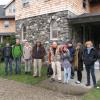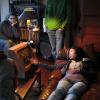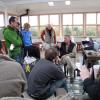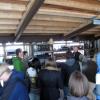I'm really glad you could stop by tonight because I have something I'd like to share with you. I have invented a cool new term and you can all feel to use it anytime you like. I guarantee that you've never heard it before so your use of this term will plant the seeds of its propagation across the internets and you might get to enjoy a warm fuzzy feeling when you hear it again and realize that you and a very small select group were responsible for its survival. The term is "Societal White Noise" and it can best be defined as what happens when man drags his fingernails across Mother Nature's blackboard. SWN as I like to call it is the sum total of unnatural sound generated by man and his machinery, electronics, and sometimes his children. I chose SWN because we all seem to attach ourselves most readily to three character acronyms like FBI, IRS, PDF, STD, and the like. I hope I haven't usurped someone else's acronym here..... If so, tough cheese! Please try to use it in a sentence every now and then to humor an old man.
Unlike me, audio ecologist Gordon Hempton makes sense and backs up his studies with research. I have to think that he might have created his own definition of audio ecology here, and after you see this excellent short video you'll certainly give him a pass and grant him the privilege. I've only experienced silence once or twice in my lifetime and even then for very brief periods of time in the Maine north woods. He has adopted the task of researching, identifying and preserving America's last truly silent places. I found Hempton's new book, "One Square Inch of Silence", available at Barnes and Noble as well as Amazon.com. It would be great if we placed as much importance on the creation of silence as an art form as we did the creation of sound.
In 3..... 2..... 1..... Roll Video.
http://www.newsweek.com/id/232668
(Remember SWN)




